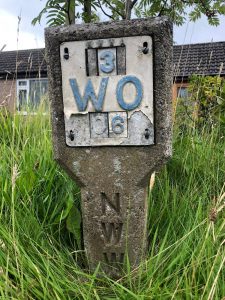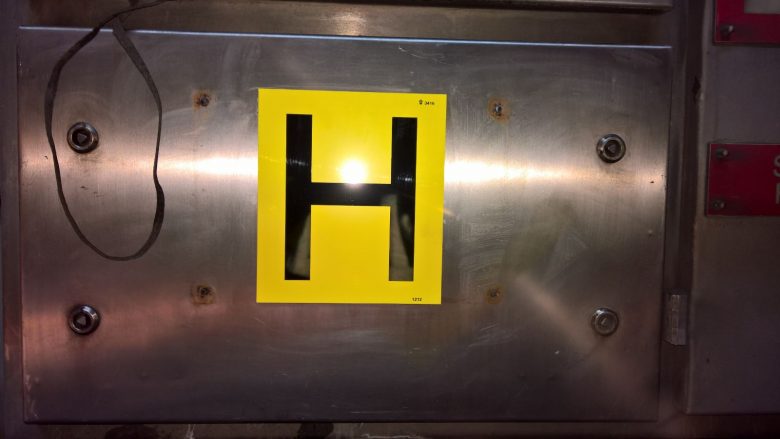What is a fire hydrant and who is responsible for maintaining them?
What is a fire hydrant?
A fire hydrant is a point where firefighters can get access to and connect into a water supply. It maybe underground or a pillar type above ground. A hydrant is an important component of active fire fighting. Therefore it is important that fire hydrants are not obstructed and are kept in good working order.
What are hydrants used for?
Fire hydrants are used to access water directly from the local mains supply to provide water for fire fighting. They are used in supplying or refilling the tank in a fire fighting appliance. In the event of fire it is vital that firefighters have access to water supplies quickly.
How do hydrants work?
Underground hydrants are located in a chamber under the surface of the road or path. They are covered by a lid usually marked with the letters “FH”, although some lids may have other markings. The hydrant requires a standpipe to access the water supply and a specially designed key to turn the water on. Pillar type hydrants are equipped with a fire hose connection for use in the event of a fire.
Who do fire hydrants belong to?
Statutory fire hydrants are owned, installed and maintained by the water companies. Private fire hydrants found on private water mains are not the responsibility of the Local Water Company or the Fire and Rescue Service.
Every water company has a duty to provide water for the Local Authority Fire and Rescue Services to use when fighting fires. The Fire and Rescue Services access the water network through fire hydrants. With Statutory fire hydrants it is usually the Local Authority Fire and Rescue Services who carry out regular inspection and maintenance to ensure they are in good working order. If a major repair or hydrant renewal is required then it is passed to the relevant water company to repair.
Where private hydrants are installed they should be tested and maintained and be kept in good working order by the responsible person(s). If you are responsible for private fire hydrants please make enquiries using the details below we can help with regular hydrant testing, maintenance and repairs.
Who is responsible for fire hydrant signs?
The location of a fire hydrant is indicated by an above ground post or marker plate. Hydrant marker plates are rectangular yellow signs, with a large black H and a pair of numbers, usually attached to a wall, lamp post or a short concrete post. The two numbers on the plate show the size of the water main and the approximate distance of the hydrant from the plate. Yellow paint is sometimes used to help identify a fire hydrant cover.
As well as marker plates, all hydrants are also shown on the digital maps available in fire engines, so that the nearest one can be found while firefighters are on their way to an incident. This also means that even if marker plates are missing or broken, the fire service will still be able to find them in most cases, and once reported they will be repaired in due course.
Local Authority Fire and Rescue Services are usually responsible for the hydrant signage that you see above ground.
White or grey posts with a blue identification plate are the responsibility of the Water Company.
Private hydrants are the responsibility of the owners/occupiers on whose land they are installed and will not be maintained by either the water company or the Fire and Rescue Service. Where private hydrants are installed they should be tested and maintained and be in good working order by the responsible person(s). If you are responsible for private fire hydrants. Please make enquiries using the details below.
Can I use water from a fire hydrant?
No, you should not try to use water from a fire hydrant. It is illegal to use a fire hydrant to obtain water for purposes other than fire fighting “unless authorised by the water authority or another person to whom the hydrant belongs” (source: Fire and Rescue Services Act 2004, section 42, subsection 6).
Unauthorised access to the hydrant pit is not allowed. People found to be using fire hydrants without the appropriate authorisation will be liable to prosecution.
You may also be liable to prosecution if you cause damage to or obstruct a fire hydrant.
Private fire hydrants
Private fire hydrants located on private water mains are not the responsibility of the local water company or the Fire and Rescue Service. They should be installed in accordance with the appropriate British Standards and be compatible with fire and rescue service equipment.
These are generally located on large sites such as:
- hospitals
- military establishments
- industrial estates
They may also be installed to provide cover for specific risk properties.
Where private hydrants are installed the testing and maintenance should be managed by the responsible person(s). They should ensure they are inspected tested and kept in good working order by a competent person. If you are responsible for private fire hydrants please make enquiries using the details below. We specialise in inspection, maintenance and servicing of privately owned fire hydrants and will be happy to help.





